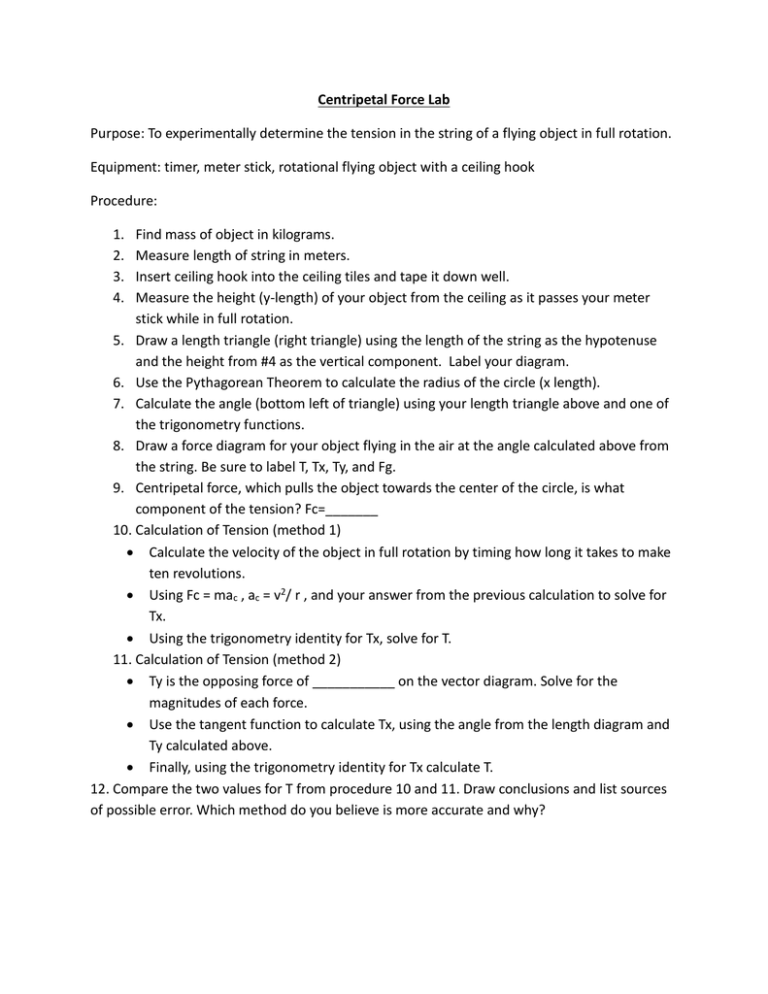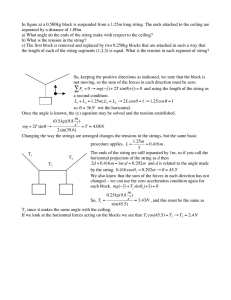Centripetal Force Lab
advertisement

Centripetal Force Lab Purpose: To experimentally determine the tension in the string of a flying object in full rotation. Equipment: timer, meter stick, rotational flying object with a ceiling hook Procedure: 1. 2. 3. 4. Find mass of object in kilograms. Measure length of string in meters. Insert ceiling hook into the ceiling tiles and tape it down well. Measure the height (y-length) of your object from the ceiling as it passes your meter stick while in full rotation. 5. Draw a length triangle (right triangle) using the length of the string as the hypotenuse and the height from #4 as the vertical component. Label your diagram. 6. Use the Pythagorean Theorem to calculate the radius of the circle (x length). 7. Calculate the angle (bottom left of triangle) using your length triangle above and one of the trigonometry functions. 8. Draw a force diagram for your object flying in the air at the angle calculated above from the string. Be sure to label T, Tx, Ty, and Fg. 9. Centripetal force, which pulls the object towards the center of the circle, is what component of the tension? Fc=_______ 10. Calculation of Tension (method 1) Calculate the velocity of the object in full rotation by timing how long it takes to make ten revolutions. Using Fc = mac , ac = v2/ r , and your answer from the previous calculation to solve for Tx. Using the trigonometry identity for Tx, solve for T. 11. Calculation of Tension (method 2) Ty is the opposing force of ___________ on the vector diagram. Solve for the magnitudes of each force. Use the tangent function to calculate Tx, using the angle from the length diagram and Ty calculated above. Finally, using the trigonometry identity for Tx calculate T. 12. Compare the two values for T from procedure 10 and 11. Draw conclusions and list sources of possible error. Which method do you believe is more accurate and why?

